We Pay Tribute to Changemakers
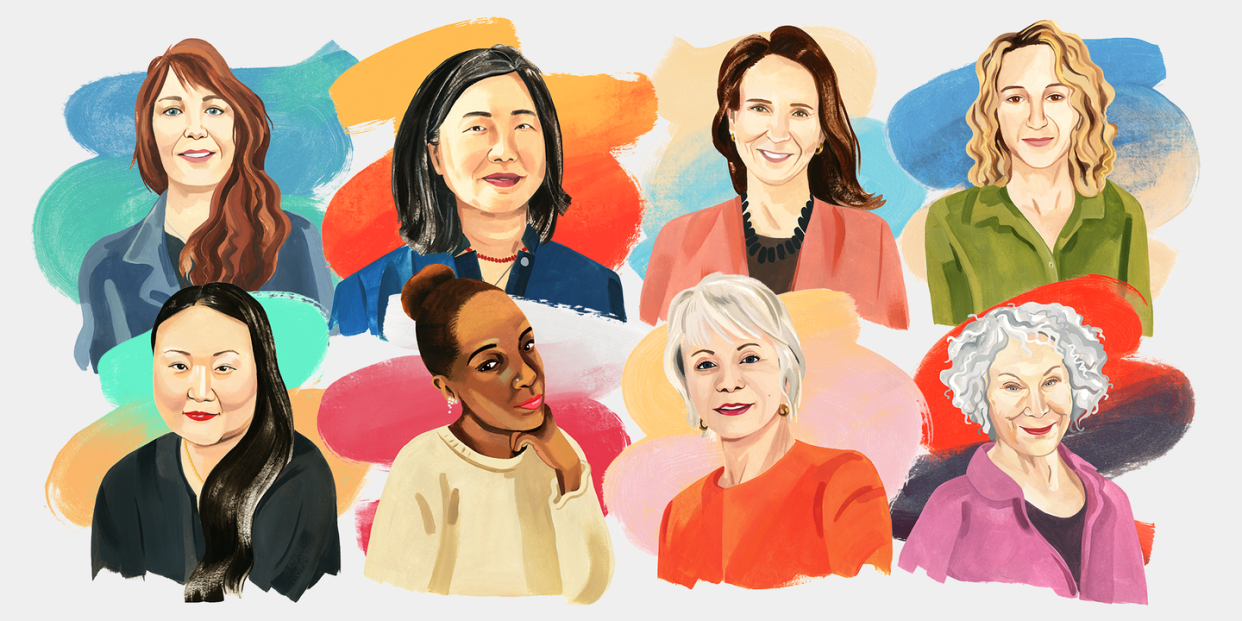
The eight authors we celebrate here are not simply writing books—which itself would be a remarkable enough accomplishment. These astonishing women are using their words and their platforms—their power—to open our eyes, awaken our senses, and deepen our understanding of each other and the society we live in. We celebrate them, yes, for the stories they tell, but also for the work they do in helping to make the world a better place, whether through what’s on their pages or through their activism. You go!
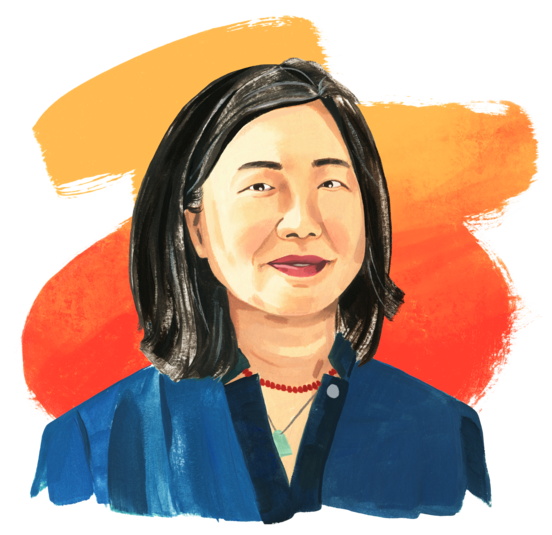
CHANGING THE NARRATIVE
Under Lan Samantha Chang’s mentorship, a new generation of writers has emerged.
When Lan Samantha Chang was appointed director of the Iowa Writers’ Workshop in 2006, she became the first female and the first Asian or non-white person to head the program since its founding in 1936. The four directors who preceded her were all white men, and while it counted among its student and faculty alumnae such renowned writers as Flannery O’Connor, Robert Frost, and Raymond Carver, it had a reputation for insularity.
That began to change under the directorship of Chang’s writing teacher, Frank Conroy, but when Chang took over, her goal, she told O Quarterly, was to “create a more aesthetically, culturally, racially diverse program” in terms of students, faculty, and the kinds of writing considered for acceptance to the program. “I was really interested,” she says, “in finding voices that would reflect our changing country.” One such voice, The Twelve Tribes of Hattie author Ayana Mathis, an Iowa grad and ex-faculty member whose book was a 2012 Oprah’s Book Club selection, told us: “In my cohort in 2009, which was early in Sam’s tenure, there were only three Black women, which was in itself unprecedented then. But by the time I left Iowa as a professor in 2018, the program was a much truer reflection of literature in this country. There were so many Black students from the U.S. and other parts of the world—the Caribbean, Ghana, Botswana, Nigeria, etc.—Latinx students, Asian students. Sam made it her mission to ensure the Workshop drew the best and brightest, which can’t truly happen if only one sort of person is admitted.” Yaa Gyasi, an Iowa alum and author of the novels Homegoing and Transcendent Kingdom, put it this way: “Lan Samantha Chang taught me the importance of being fiercely protective of your writing life, of keeping the work central, even as other things start to make demands. I wouldn’t have finished Homegoing without her.”
Chang also wanted to foster a climate not of competition but of cooperation, which meant leveling the funding process so all students got the same amount of financial support. Previously, the amount of aid students received depended on what faculty thought of their work, but under Chang, that changed. She says that “this was important to free people up to do more innovative work—to write what they really wanted to.” The program began to encompass writers of science fiction and fantasy, and other, more experimental work. “This was necessary,” Chang felt, “because Iowa is the first and in many ways the seminal creative writing program in the country, so it’s essential we reflect not only America’s growing diversity but also the complex mix of writers and cultures that are now our country.”
One of those writers is Chang herself, whose new novel, The Family Chao (Norton), is a harrowing, mysterious, and at times hilarious reimagining of The Brothers Karamazov. In it, a Chinese American restaurateur in Wisconsin is murdered, and one of his sons is accused of the crime.
Chang believes teaching has helped her grow as a writer. For the new book, she says, “I was inspired by my students, freed by the gradual recognition that I no longer had to strictly adhere to all the rules of writing that had been taught to me by my professors.” She says: “There’s a cross-pollination of words and thoughts and ideas that takes place in our community that makes possible the evolution of a literary generation.”
—Leigh Haber
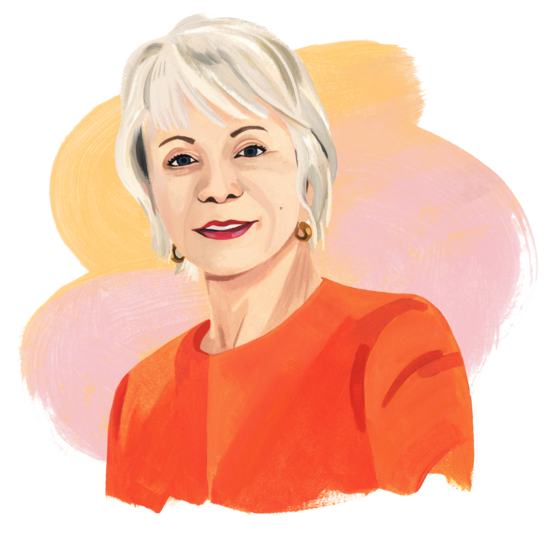
HEROINE OF HER OWN STORY
Isabel Allende is one of literature’s foremost writers. But it’s her dedication to women’s rights that has truly transformed lives.
Isabel Allende’s biography reads like something straight out of one of her novels, the latest of which is Violeta (Ballantine). The heroine of the exotic epistolary tale is looking back at her epic life from age 100, having survived the Spanish flu, the Great Depression, a daughter’s death, and much else. Now she’s chronicling that expansive existence for her grandson, from her deathbed.
In real life, Allende will be 80 years old in August. She was born in Peru to Chilean parents, but when her parents separated, she returned to Chile with her mother and siblings to live with her grandparents. Allende was 4 at the time. She spent the next years devouring many of the books in the family library, and developed a reputation for speaking up, even daring to argue religion and politics with her grandfather, a strict Catholic. Allende says she was a feminist by the time she attended kindergarten, though she didn’t have a name for it. Decades later, in 1973, her cousin Salvador Allende, then president of Chile, died in a military coup, and Chile’s government fell to a dictatorship. By that time, she was married with two children and worked as a journalist for a progressive women’s magazine that tackled such verboten topics as abortion, contraception, divorce, and domestic violence. In 1975, Allende was blacklisted by the Chilean government and forced to leave the country.
It wasn’t until 1982 that Allende published her debut novel—the first of 16—The House of the Spirits, which launched her legendary career, and in 1987 she moved to the United States with her two children, Nicolás and Paula. Just five years later, a tragedy prompted Allende, who’d remained an activist for women’s rights, to double down on her efforts. After the sudden death of her 29-year-old daughter from a blood disease, Allende launched the Isabel Allende Foundation in Paula’s honor. It has since been dedicated to supporting programs that “promote and preserve the fundamental rights of women and children to be empowered and protected.” Allende told us that “we are trapped in a culture that is at war with women, who remain subjects of extreme violence around the world.” The foundation, which is now run by Allende’s daughter-in-law, Lori Barra, and financed by royalties from her book sales, “invests in the power of women, especially the poorest, the most vulnerable, the most at-risk.” Allende says that their focus is threefold: on health, especially contraception and abortion rights; on providing education and life skills so that victims of poverty or violence can become self-sufficient; and on protection against violence and exploitation because “if you live in fear, how can you have a life?”
Allende is passionate about her foundation’s work, and is well-informed about unfolding events around the world that put women in harm’s way. She admits that at times, she gets discouraged by all the bad news, feeling that “we are just a drop of water in a desert of need.” But her daughter-in-law helps her keep it all in perspective, urging her not to think about the macro, but about “each case, each name, each face” the foundation helps. “We can’t shrug off problems that seem insurmountable; we have to act,” she says. “We need to exorcise the demon of indifference.”
In her 2021 meditation/memoir The Soul of a Woman, Allende writes what must be her mantra: “Feminism, like the ocean, is fluid, powerful, deep, and encompasses the infinite complexity of life; it moves in waves, currents, tides, and sometimes in storms. Like the ocean, feminism never stays quiet.” —L.H.
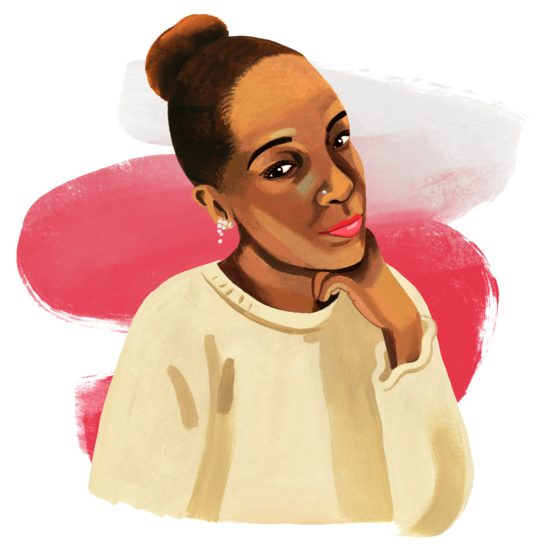
GOING HOME AGAIN
Scholar Imani Perry travels south to find the heart of America.
With the exception of the South, American regions are often characterized as forward-leaning: The West and Midwest are wild frontiers of gritty innovation and expansionism; the East and Northeast are fast-paced centers of culture, commerce, industry, and opportunity. That leaves the South as the “backward other,” claims Imani Perry in her provocative, perspective-shifting South to America: A Journey Below the Mason-Dixon to Understand the Soul of a Nation (Ecco). In it, Perry reexamines that characterization, complicating it and calling it into question by reminding us that good, bad, and indifferent, the South is the birthplace of much of what makes America America. “[The South] is really the core of what the nation is,” she writes, “often the vanguard of where we are going as a country.”
“Tell about the South,” Faulkner famously enjoined in Absalom, Absalom! “What’s it like there. What do they do there. Why do they live there. Why do they live at all.” With portraits of previously unheralded events and people rendered in exquisite detail, Perry answers Faulkner’s challenge. She ingeniously structures her exploration of the South as a travel itinerary, moving state by state, city by city, interweaving tales of the American Experiment. Her trips to lecture and to interview notables as well as regular folk traverse a broad swath, from Louisville to Atlanta to Washington, D.C. It was the places like these, Perry writes, that gave us the dollar-store business model, Coca-Cola, FedEx, and HBCUs.
Perry also observes that the South gets short shrift when it comes to progressive political movements: “For some reason,” she writes, “folks want to act as though Black power started in New York and Oakland, even though the Black Panther logo came from the Lowndes County Freedom Organization in Alabama, even though Huey P. Newton was born in Louisiana, Eldridge Cleaver in Arkansas.” She points out: “Black nationalism and Black secession and Black armed self-defense has always been a part of the political imagination of the Black South, from Martin Delany through Nat Turner and Denmark Vesey.”
Born in Birmingham and raised in Cambridge, Massachusetts, and Chicago, Perry is most adept at shifting our narrow misconceptions about the South through her penchant for research and attention to the nuances of histories in obscure areas. She writes about the Lowcountry—the Sea Islands embodied in the Gullah Geechee culture, where enslaved Ibo Africans conjured stories about escaping slavery by soaring away (later immortalized in Virginia Hamilton’s The People Could Fly). Intermingling stories from her past with theirs, Perry relates how these coastal communities defied the expectations of the slave owners who left them to languish there by learning to fish and “become water people,” painting their ceilings “haint blue,” a combination of indigo, lime, and milk meant to ward off ghosts by “the tint of water and sky.”
Perry’s exploration—based on interviews with Southerners, from taxi drivers to renowned authors and esteemed art collectors—dismantles tropes and stereotypes, revealing the South’s hard-won wisdom and generosity of spirit. And Perry challenges our often simplistic geographic understanding of the American South by extending its borders to Cuba, the Bahamas, and Haiti for comparison and contrast. She asks us to revisit our preconceived notions of the region, not to forget its flaws, but to remind us that the South gave birth to much of the music, art, food, literature, and commerce that nourishes our souls and supports our way of life.
Perry writes, “Critical theorist Walter Benjamin once distinguished between two types of storytellers: One is a keeper of the traditions, another is the one who has journeyed afar and tells stories of other places. But there is a third, and that is the exile.” In this vibrant, revelatory book, Perry proves herself to be a radiant storyteller in all three modes, like Zora Neale Hurston, Alice Walker, and Nina Simone before her. —Joshunda Sanders
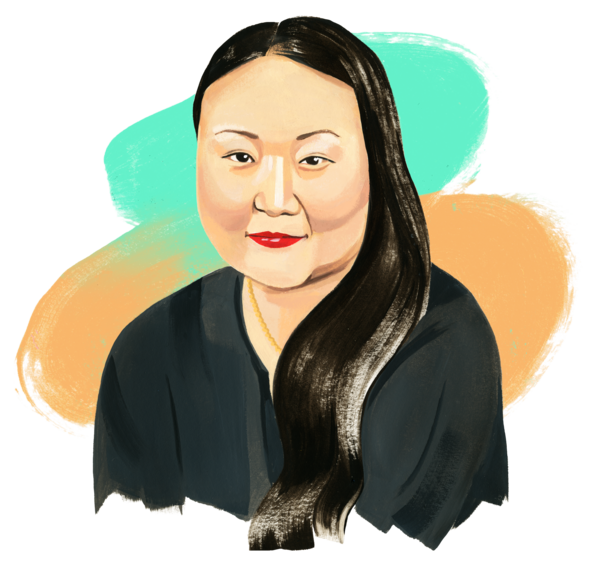
THE OTHER SIDE OF EDEN
Hanya Yanagihara’s remarkable third novel dares the reader to reimagine the past and future.
Published in 2015, Hanya Yanagihara’s A Little Life is a story about trauma and the tangled relationships among four college friends in New York. It won the Kirkus Prize and was shortlisted for the Booker Prize and the National Book Award. Yanagihara is now back with To Paradise, another tour de force melding the polished, realist tradition of Henry James and Joseph Conrad with our looser, genre-bending moment. Yanagihara rewrites history for the purposes of the novel, drawing on and subverting narrative conventions, and defying our expectations about what’s “normal” in terms of gender. She’s written a symphony on the page.
To Paradise is effectively three novels in one, set in different time periods, 100 years apart. There are recurring names of Charlie, David, and Edward and the last names of Griffith, Bingham, and Bishop, with little or no apparent connection to one another. The corrupting influence of wealth and power is a constant, as is the influence of a grandparent. And in each, the concept of paradise is explored. But there the resemblance ends.
In its first part, To Paradise offers a daring take on the past in which, post-Civil War, the country is divided into the North, Free States, the United Colonies, and the West. The tale unfolds in downtown Manhattan, where a rich and influential family—founders of the utopian Free States to which New York belongs—reside. David, a grandson of the Bingham patriot, suffers from an unnamed illness. He eschews an arranged marriage with a socially acceptable partner for an unpredictable relationship with a penniless music teacher. It’s 1893, and gay couples are free to marry without judgment, but classicism and racism reign strong. There are clear echoes of James’s Washington Square, though with the author’s singular twist.
Part Two is set in both New York and Hawaii, with another unequal relationship at the center, this one between David, a paralegal, and his older partner, Charles, who runs a prestigious law firm. It’s 1993 amid the AIDS epidemic, where the shadow of death lurks in thoughts and looks between friends; each lesion or weight loss is noted. David also keeps a secret about his background and his father’s illness in Hawaii, no longer the paradise
of his youth. (Yanagihara’s family is from Hawaii, where the queen was overthrown in 1893, and Hawaii was eventually annexed.)
Part Three, set in a dystopian 2093, comprises half the novel and is steered by two narrators: a young woman named Charlie, who chronicles her day-to-day existence in a New York that has staggered through pandemics and the severe effects of climate change; and her grandfather, a Hawaiian émigré, whose story is told in epistolary form. New York is eventually split into municipalities and zones where individual freedoms are severely curtailed and travel beyond its borders is prohibited. Hawaii is destroyed by the effects of adverse weather, a paradise lost. Quarantine camps, containment suits, and the restriction of movement are already familiar.
Yanagihara changes the novel landscape: What is different, we accept; what is familiar, we recognize. To Paradise resonates because of its exploration of human relationships and the dismantling of preconceived notions. Biases and hatreds lurk and linger, emerging periodically to remind us that while one form of discrimination may have been eliminated, others remain embedded in our institutions, and cannot easily be eradicated; in the end, threads of prejudice bind all three parts. And yet To Paradise is rich with characters that live and love, with few boundaries. Yanagihara asks us to consider an alternative America that could have existed at any point in history if other decisions had been made, and that might still prevail if we do the right thing. —Wadza Mhute
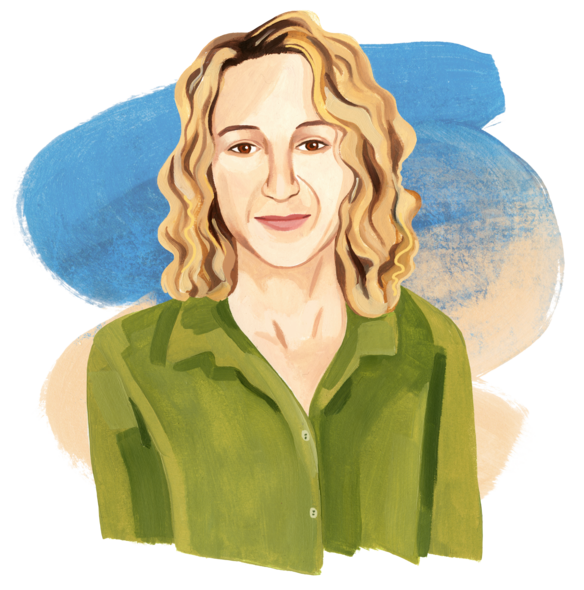
CIRCLE OF LIFE
In Kathryn Schulz’s radiant memoir, mourning loss leads to brave new beginnings.
In June 2015, the Supreme Court handed down a landmark decision legalizing same-sex marriage in the United States. For New Yorker staff writers Kathryn Schulz and Casey Cep, this meant they could wed, and in May 2018 they did, “the conventional way, in front of those who had helped shape us and filled our lives with joy.”
This “celebration of the ordinary” may be the most radical element of Lost & Found (Random House), Schulz’s outstanding second book. Schulz has mastered forms that include personal essays, literary criticism, and reporting (she won a Pulitzer for an article on a potentially cataclysmic earthquake in the Pacific Northwest). Lost & Found is a memoir in three acts. “Lost” recounts the grief she experienced after the prolonged death of her father, a lawyer and refugee who’d fled the Nazis; “Found” charts her way back to joy under Cep’s tender hand; “And” ushers in a fresh chapter for the couple in Maryland, near Cep’s parents, where amid their vegetable garden and “a swath of wildflowers” they prepare for the birth of their baby in the depths of the pandemic.
Schulz’s 2017 New Yorker essay on her father’s decline and death, “When Things Go Missing,” connected his absence with abrupt vanishings in all our lives—misplaced keys and baseball tickets—serving as a template for Lost & Found. Schulz felt unmoored after he was gone. “A strange part of my experience about grief was just how utterly absent he was: the non-presence of him was omnipresent,” she writes.
The second section offers an ode to Cep, who spent her childhood working alongside her parents on their farm—sorting scrap, stacking firewood, helping empty the trash and vacuum the carpets. She attended 4-H meetings and vacation Bible school. Raised a Lutheran, Cep is a devout believer who studied theology as a Rhodes Scholar—the opposite of the urbane, atheist but culturally Jewish Schulz.
And yet a transcendent passion for literature and philosophy drew them together. In Cep, Schulz discovered a soul mate. There are beguiling set pieces nestled in the third act like Fabergé eggs, unlocking intimate remembrances. In August 2021, the couple welcomed a daughter. Schulz is acutely aware of how her family is reflective of broader, seismic change. The frames of normie domestic life have opened up. As Lost & Found attests, sometimes paradigms shift seismically on front porches, amid church socials, in the quiet of a country twilight. —Hamilton Cain
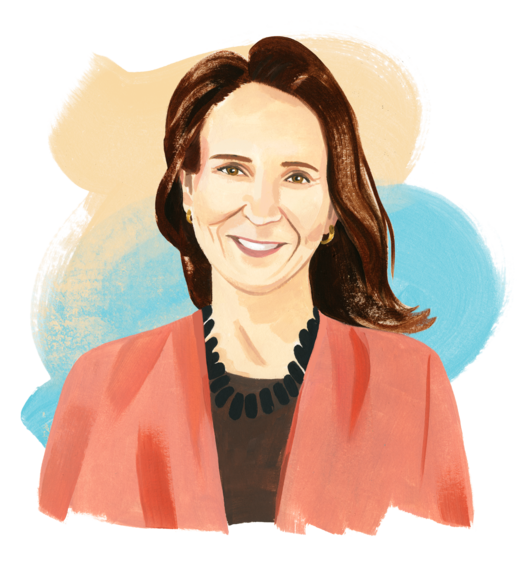
OUR BODIES, OURSELVES
Meghan O’Rourke has written a call to arms in the fight for compassionate healthcare.
The myriad flaws in our medical infrastructure come as no surprise to Meghan O’Rourke, whose set of symptoms, which first presented in the late 1990s but went undiagnosed until 2014, often led her to anger and despair. But out of that dark place, she learned “that the illness was not just my own; the silence around suffering was our society’s pathology.”
Based on a decade of investigation, including interviews with a cohort of over 100 other patients, The Invisible Kingdom: Reimagining Chronic Illness (Riverhead) is both an examination of what ails medicine and a manifesto.
“I got sick the way Hemingway says you go broke: ‘gradually and then suddenly,’” O’Rourke writes. Just after graduating Yale, she abruptly experienced hives, fatigue, brain fog, and night sweats. She was initiated into “the First Assembly of the Differently Unwell.” But the symptoms ebbed—for a while. In her mid-30s, while on vacation with her husband, she noticed a Braille-like rash on her arm. Extensive lab workups indicated nothing was amiss; a couple of specialists suggested she see a psychiatrist. O’Rourke heard echoes of the “hysteria” judgments of the Victorian and Freudian eras, but she was determined to get to the bottom of what afflicated her. She googled, dropped in on chat rooms—becoming a kind of expert on autoimmune disorders. Ultimately, she was diagnosed with Lyme disease and other conditions that had long festered under the radar, and found a team who customized a treatment plan for her.
The Invisible Kingdom is a medical detective story with the drama and style of The Immortal Life of Henrietta Lacks. In her research for the book, O’Rourke found that what she’d gone through was not uncommon: Patients suffering from autoimmune disorders typically encounter a series of roadblocks, among them clinicians who don’t listen to or believe them. So she set out to “build a book that could act as a bridge between a person with chronic illness and the people around them,” she told O Quarterly. She notes that medicine is “at heart an ethical enterprise, not a mechanical one.” Empathy, she concludes, is a prerequisite, especially as autoimmune disease cases soar.
O’Rourke’s book has ignited a necessary conversation, proving the pen to be as mighty as the stethoscope. —H.C.
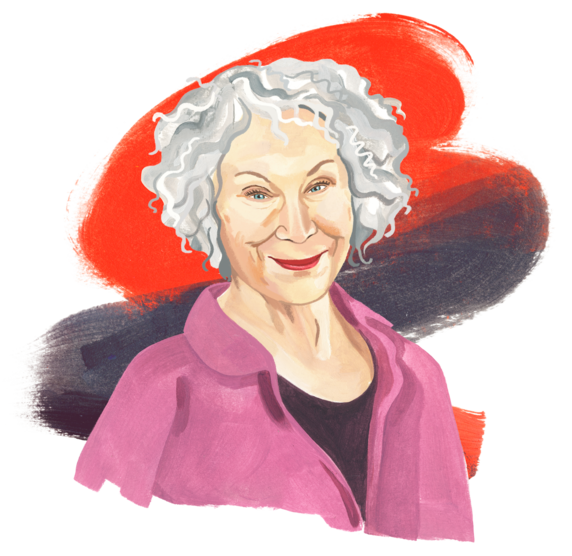
THE SOOTHSAYER
Margaret Atwood is a visionary novelist. But as her new volume of essays, Burning Questions (Doubleday), underscores, she also has an uncanny knack for foreseeing what will happen in reality. Books director Leigh Haber wanted to know more about what drives Atwood’s art and activism.
LH: You have a roving curiosity that’s led you to investigate a variety of topics from a young age. What role does curiosity play in your work?
MA: It’s primary. Though unlike the cat, it hasn’t killed me yet. I spent a lot of my childhood in the woods, so resources were limited—no schools, movies, libraries, flush toilets, electricity, etc.—but there were books of all kinds, and many rotten logs. You never knew what might be in the books, or under the logs. A newt? Anne Boleyn? I was also puzzled by some of the customs and attitudes “civilized” people displayed, and why they sometimes thought or did what they did—many untrue and unfair things, it seemed to me. I’ve just continued with the books and the logs, and also the puzzlement. Maybe we write to explore what puzzles us.
LH: It seems as if you’ve been able to see ahead to what might happen if we close our eyes to the erosion of women’s rights, climate change, and more. But that prescience hasn’t demoralized or numbed you. How do you remain engaged, even enlivened?
MA: I do hear a lot of understandable despair and gloom. Looking back we can see huge injustices and unbelievably violent and horrible acts, on a mass scale. But we can also see amazing acts of courage, steadfast efforts to assert what’s true and just, and to try to combat tyrannies of many sorts. I’m old enough to have known resistance fighters from World War II, and also people who strove—in the ’50s, ’60s, ’70s—to address inequalities and injustices. If human beings don’t try, we will inevitably fail. It’s that simple.
Though I do sometimes feel like old Beowulf tottering out to fight the dragon. What, again? Are you delusional? Don’t you think you’re too old for this? But so far I’ve ended up saying: Not…quite…yet.
LH: Is it the artist’s responsibility to speak truth to power?
MA: Once we start dictating to artists, we’re in trouble. That said, all of us, artists included, respond to the conditions, challenges, and viewpoints of the present moment. Those now involve massive accumulations of wealth and power in the hands of the few, lying and misinformation on a gigantic scale, and attempts to erode democratic norms and to prevent further democratization while pushing back against rights—such as women’s rights to their own bodies—that we thought were established. Still, let’s not start telling artists what they must make art about. They’ll figure it out.
LH: What is our most urgent problem now, and how can one person help?
MA: The climate crisis is exacerbating all other problems. But for some solutions, take a look at Project Drawdown, online. As for what a single individual can do…that would depend on who they are, and how much disposable time and money they have. Many are close to the edge already, and if they’ve just been burned out, invaded, flooded, etc., they simply don’t have extra bandwidth. I believe the answers will come from communities—people working together—and from changes in the way we live, and from the new inventors and entrepreneurs who are springing up. Mushroom bricks? Fabric made from algae? New energy systems? Agricultural reforms? Once you start looking, there’s a lot already happening.
Will we—the human race—be in time? Let’s find out.
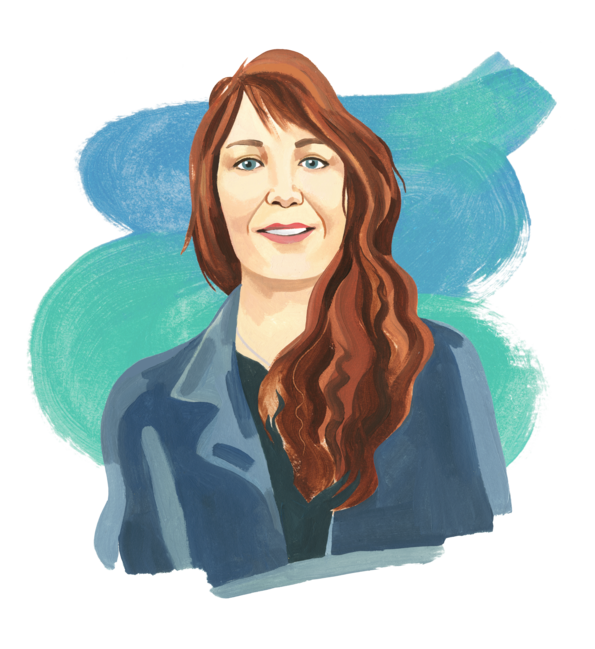
BE THE CHANGE
Mesha Maren’s day jobs are novelist and university professor. But she’s just as passionate about her side gig teaching writing to the incarcerated.
Suspenseful, seductive Perpetual West (Algonquin) unearths the secrets in a marriage as Elana searches for her missing husband, Alex, in a Mexico that challenges her fixed notions about love, language, and culture. Via Alana’s odyssey, the novel probes deeper themes, from fluidity of desire to the rigidity of racism to familial bonds.
There’s a tang of rabble-rouser in Maren’s storytelling, something she comes by honestly. The daughter of prison reform activists, she grew up in rural Alderson, West Virginia, home to the first federal prison for women, founded in 1927. Her father operated a nonprofit hospitality house for families and friends of the incarcerated; as a girl, Maren accompanied him to visit inmates cut off by friends and relations.
Now an assistant professor of creative writing at Duke, Maren shares that her first teaching experiences were at homeless and domestic violence shelters and a state prison. Up until the pandemic prevented her from going in person, she taught writing workshops at the Federal Correctional Institution Beckley, an all-male prison in West Virginia. There she often gave her students 40 to 50 minutes of free writing time, which was frequently the sole quiet period in their days. “From television shows, we get the idea that inmates spend a lot of time alone in cells,” she says, “when in fact they follow a super-strict schedule, starting at 5:00 a.m.”
Garrett Jackson, a former student of Maren’s who is six months into a two-year federal prison sentence, had been keeping a journal while incarcerated and began to yearn for a way to help his “words flow in a rhythm that the prison environment seemed to be stunting.” Enter Maren. “Prisoners are not an instructor’s typical student,” Jackson says. “But Ms. Maren saw us as individuals with minds to be shaped and not for the uniform we wore. True, our minds were like rough stone,” Jackson continues, “but she helped us smooth the edges and improve our writing skills in a manner that helped those with writing talent blossom. And that challenge helped us find a creativity and spark of light our minds needed to put down on paper our thoughts, feelings, hopes, and dreams.”
Jackson is now completing his doctorate, and Mesha Maren plans to continue to devote her time and talent to the people her father first advocated for as soon as she can. —Hamilton Cain
TRAILBLAZERS
The orgs we spotlight here are incubating change—opening doors and ushering in a new wave of artists.
CAVE CANEM
In 1996, poets Toi Derricotte and Cornelius Eady created Cave Canem Foundation to provide space and support for Black poets. Since its founding, Cave Canem has counted among its fellows many of the era’s most exceptional American poets, including Jericho Brown, Robin Coste Lewis, Morgan Parker, and Gregory Pardlo. Pulitzer Prize–winning alum Tyehimba Jess describes his experience there this way:
“The group of Black poets I’ve met through Cave Canem forced me to challenge myself to make the very best poem I could on the page, to never stop until I was spent with the effort in mind and spirit. It’s this kind of kinetic urgency that Cave Canem fellows feel in poetry workshops and at the many readings and events we sponsor throughout the year. The trail of books, poems, awards, and learning that Cave Canem has created leaves a legacy that has changed the face of American literature forever.” (cavecanempoets.org) —Julia Berick
HEDGEBROOK
Seattle philanthropist Nancy Nordhoff founded this literary retreat in 1985.
The Whidbey Island oasis she purchased as a working farm has hosted a global community of women writers, who draw inspiration from the idyllic surroundings, for highly sought-after writing residencies. A stay at Hedgebrook includes a cottage of one’s own, instructions on how to build cozy fires, and nightly chef-prepared meals at the farmhouse for fellowship and community building. Since its founding, Hedgebrook has hosted nearly 2,000 writers, among them Eve Ensler, Gloria Steinem, and Natalie Baszile. (hedgebrook.org) —Joshunda Sanders
LIBRARY OF AMERICA
When it launched in 1982, Newsweek called Library of America “the most important book publishing project in our nation’s history.” Among its initial board members were Eudora Welty and Robert Penn Warren. It was envisioned by literary critic Edmund Wilson, who feared that many works by America’s best writers were out of print or hard to find and needed a concerted publishing effort to preserve them. The LOA editions encompass all periods and genres—classics, neglected masterpieces, and historically important documents and texts. (loa.org) —Leigh Haber
ASIAN AMERICAN WRITERS’ WORKSHOP
The Asian American Writers’ Workshop was founded as a nonprofit in 1992 (a venture whose idea came to life around a diner booth in New York City’s East Village) to highlight and promote stories by Asian Americans. It accomplishes these goals through writing workshops, fellowships, a digital magazine, and a reading series featuring writers like Min Jin Lee, Amitav Ghosh, and Alexander Chee. (aaww.org) —Wadza Mhute
BALDWIN FOR THE ARTS
Baldwin for the Arts in upstate New York was founded by author Jacqueline Woodson after winning Sweden’s Astrid Lindgren Memorial Award in 2018—an award that came with a substantial cash prize. She says: “I have a quilt square my friend Melanie Hope made for me. It says, ‘You have to give it away to keep it.’ I truly believe this. Without other artists in the world, I wouldn’t be able to do my work. This money, and the help of others, allowed me to begin the work I had long dreamed of doing—creating a safe space for artists.”
Artists can apply for literature, music composition, and visual arts residencies, which are free. Woodson’s hope is to “give artists the gift of uninterrupted creative time. The end game of course, is more great art, words, and music in the world.” (baldwinforthearts.org) —Wadza Mhute
You Might Also Like

